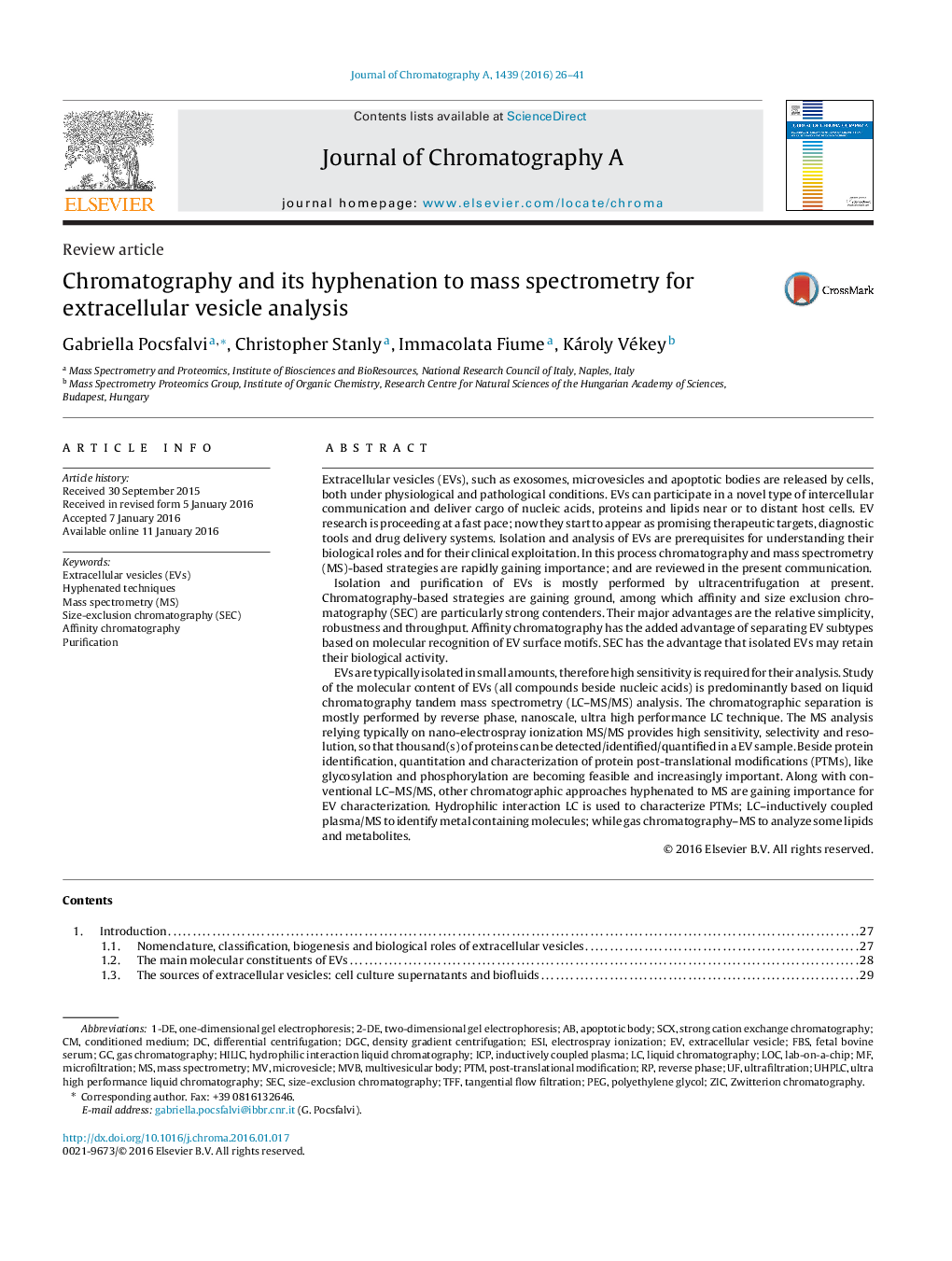| کد مقاله | کد نشریه | سال انتشار | مقاله انگلیسی | نسخه تمام متن |
|---|---|---|---|---|
| 1198815 | 1493487 | 2016 | 16 صفحه PDF | دانلود رایگان |
• EVs: The next big thing in diagnostic and therapeutic research.
• Chromatographic techniques: A tactic to overcome EVs isolation barriers.
• Chromatography and MS: Perfect couple to explore the bio-cargo of EVs.
• Review the past, present and future of chromatography-MS in EVs research.
• Perspective on chromatography-MS analytical systems in EV research is provided.
Extracellular vesicles (EVs), such as exosomes, microvesicles and apoptotic bodies are released by cells, both under physiological and pathological conditions. EVs can participate in a novel type of intercellular communication and deliver cargo of nucleic acids, proteins and lipids near or to distant host cells. EV research is proceeding at a fast pace; now they start to appear as promising therapeutic targets, diagnostic tools and drug delivery systems. Isolation and analysis of EVs are prerequisites for understanding their biological roles and for their clinical exploitation. In this process chromatography and mass spectrometry (MS)-based strategies are rapidly gaining importance; and are reviewed in the present communication.Isolation and purification of EVs is mostly performed by ultracentrifugation at present. Chromatography-based strategies are gaining ground, among which affinity and size exclusion chromatography (SEC) are particularly strong contenders. Their major advantages are the relative simplicity, robustness and throughput. Affinity chromatography has the added advantage of separating EV subtypes based on molecular recognition of EV surface motifs. SEC has the advantage that isolated EVs may retain their biological activity.EVs are typically isolated in small amounts, therefore high sensitivity is required for their analysis. Study of the molecular content of EVs (all compounds beside nucleic acids) is predominantly based on liquid chromatography tandem mass spectrometry (LC–MS/MS) analysis. The chromatographic separation is mostly performed by reverse phase, nanoscale, ultra high performance LC technique. The MS analysis relying typically on nano-electrospray ionization MS/MS provides high sensitivity, selectivity and resolution, so that thousand(s) of proteins can be detected/identified/quantified in a EV sample. Beside protein identification, quantitation and characterization of protein post-translational modifications (PTMs), like glycosylation and phosphorylation are becoming feasible and increasingly important. Along with conventional LC–MS/MS, other chromatographic approaches hyphenated to MS are gaining importance for EV characterization. Hydrophilic interaction LC is used to characterize PTMs; LC–inductively coupled plasma/MS to identify metal containing molecules; while gas chromatography–MS to analyze some lipids and metabolites.
Journal: Journal of Chromatography A - Volume 1439, 25 March 2016, Pages 26–41
